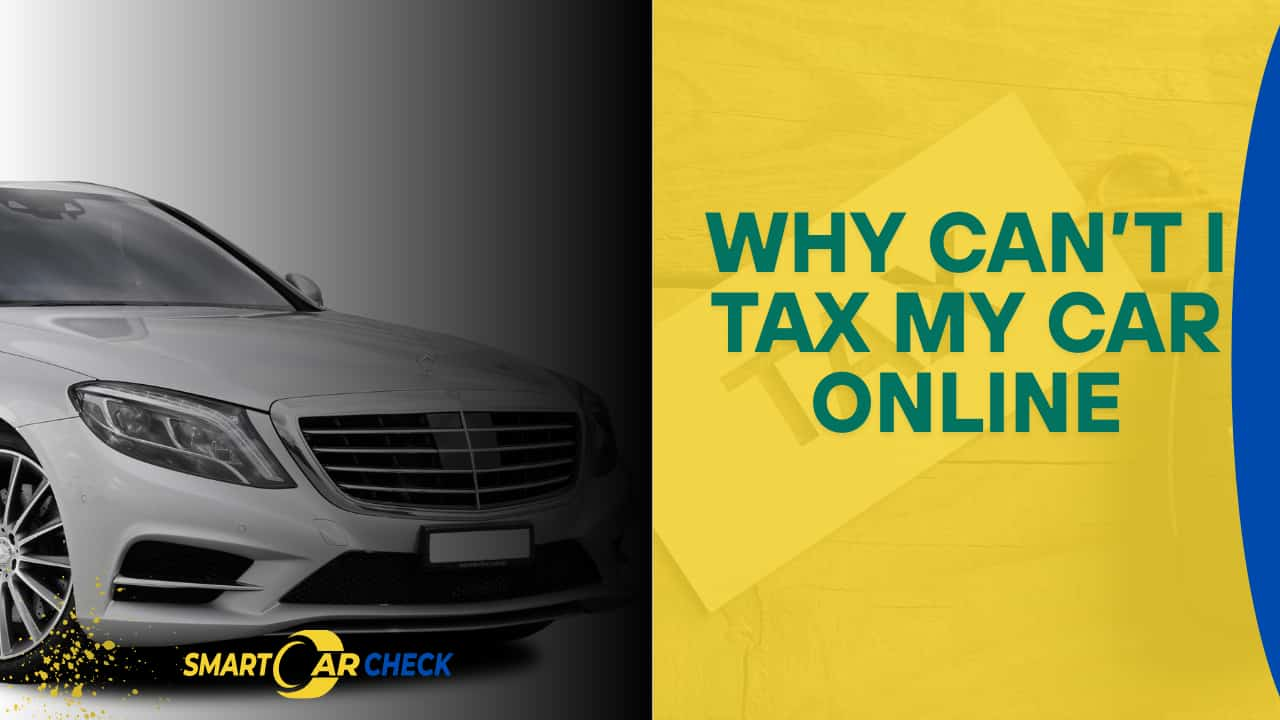For some people, buying a used car is exciting as they can get the car they want but at a lower price, until you try to tax it and it hits the wall. You enter the code on the new keeper slip, expecting a smooth process, but nothing happens. The site throws an error. You’re stuck.
Many car owners in the UK are frustrated enough, especially if they are new to the process or have just bought a car. If you are feeling this way now, there is no need to worry, as many people feel the same.
Need an easy guide? Here’s one that explains what’s going wrong and what to do next.
Value Your Car in Under 30 Seconds
Before we jump in, you can check your vehicle’s value in just a few seconds by using online tools like Smart Car Check, a simple tool that lets you check the car’s tax, MOT history, and car value.
If you’re unsure why your tax isn’t going through, this site can tell you if you’re missing something, like a valid MOT or correct tax class. It also gives you a detailed vehicle report by registration, which is handy when sorting out DVLA issues.
Why am I Unable to Tax My Car?
The most common reason is a problem with the 12-digit reference number on the V5C/2 slip (the green section you get when buying a used car). If this number is incorrect, damaged, or has already been used, the system won’t let you proceed with your request.
Another issue is timing. If the DVLA hasn’t updated its system after the previous owner’s changes, your attempt to tax the vehicle may fail.
Some vehicles also can’t be taxed online. This includes those with outstanding issues like no valid MOT, incorrect tax classification, or registration errors.
What are the Other ways to Tax Your Cars?
Actually, you can use two more methods to tax your car: over the phone and an offline visit to a post office. Both are useful if you have a problem when taxing your car online.
Tax the Car Over the Phone
If you prefer to pay your car tax over the phone, here are the steps to successfully pay the vehicle tax.
- Call the DVLA Vehicle Tax Service at 0300 123 4321. Before the call, remember to have all your documents, like your V5C and new keeper slip (V5C/2), in hand.
- Follow the DVLA staff’s instructions and provide your vehicle registration number and the reference number from your V5C or V5C/2.
- Verify your vehicle registration details by their automated system against your documents, and make sure both match.
- Choose your payment method: a one-time payment via card or direct debit.
- Once finished, you’ll receive a confirmation number. Keep it for your records.
![Why Can’t I Tax My Car Online [Updated 2025] 1 Why Can’t I Tax My Car Online](https://smartcarcheck.uk/wp-content/uploads/2025/05/Phone-700x394.jpg)
At a Post Office
If you feel like going to the post office to pay the vehicle’s tax, you must gather a few documents, such as a V5C logbook or new keeper slip (V5C/2), a valid MOT certificate, and proof of insurance, before going to the post office.
- Visit a participating Post Office that handles vehicle tax transactions.
- Hand your documents over to the person behind the till.
- The clerk will verify your details and ensure everything is in order.
- Choose your payment method and complete the transaction.
- The clerk will process your payment and provide a receipt and confirmation of your vehicle tax. Keep the receipt for your records to avoid any future discrepancies.
What Documents Do I Need to Tax My Car?
If you want to tax your car at the post office, here’s a list of the documents you need to bring along with you:
- A valid MOT certificate if your car is over three years old
- Proof of insurance (not always needed at the Post Office, but wise to have)
- The new keeper slip (V5C/2) or the full V5C logbook
Check your car’s emissions and other details before taxing it—some cars fall under different tax classes, which can cause delays.
Common Car Tax Issues and How to Resolve Them
Let’s break down the most frequent problems many face and how to fix them quickly.
1. No MOT
Unfortunately, you can’t tax a car without a valid MOT if it’s older than three years. No exceptions.
The Solution: Get MOT Certified
Book an MOT as soon as possible. Some garages even offer same-day tests. Once passed, you can tax the car immediately if you’re unsure whether your MOT has expired.
2. Previous Owner Was Exempt from Vehicle Tax
Some vehicles are tax-exempt for specific reasons (like disabled or historic vehicles). If your car was previously in an exempt category, the DVLA will block online taxing until you change the car’s tax status.
The Solution: Changing Your Vehicle’s Tax Class
To change your vehicle’s tax class, visit a post office that handles vehicle taxes. You must bring proof of the new class (usually V62 or V5C), and you may request a tax class change. Complete this step to bring the car’s standard system back to life.
3. Invalid Reference Number
The 12-digit number on the V5C/2 must be used within two months of purchase. After that, it may no longer work.
4. What if I Bought a Car Without a V5C Logbook?
We know it’s a weird phenomenon when it happens more than you think. Some buyers buy a car without a V5C logbook and find themselves stuck when they want to tax the car.
The Solution: Visit Your Local Post Office
You’ll need to fill out form V62 and bring it along with proof of purchase and ID. The staff will help you apply for the new V5C, and you can tax the car at the same time.
Are you unsure which tax band your car falls into? Use this tax band checker to find out.
Conclusion
Understandably, not being able to tax your car with the new keeper slip is frustrating, but you are not stuck with it forever. Whether it’s an MOT issue, a paperwork error, or an outdated reference number, there’s always something to resolve the problem.
Use resources like Smart Car Check to be sure of your car’s history, MOT status, emissions, and tax class. It’s the easiest way to avoid nasty surprises.
Got stuck? Call or visit your local Post Office, bring the right paperwork, and you’ll be on the road in no time.
Frequently Asked Questions
Is the VIN on the green slip?
If you need to find your car’s distinct Vehicle Identification Number, you will find the information within your V5C registration certificate. V5C, the logbook, is the official record containing key details about your vehicle, such as its unique Vehicle Identification Number (VIN).
How do you check if the vehicle has a clean title?
You can get a vehicle history report to check the car’s title. The report will contain complete information about the car, such as the lien/loan report and title report.
Is registration the same as title?
Establishing the rightful owner of a registered vehicle is the fundamental purpose of a car’s title, which serves as the official ownership document. Conversely, the car’s registration is the authorization that grants the vehicle the legal right to be driven on public roads. An important procedural difference lies in their maintenance: vehicle registrations usually demand renewal either annually or biennially, a requirement that does not apply to car titles.


